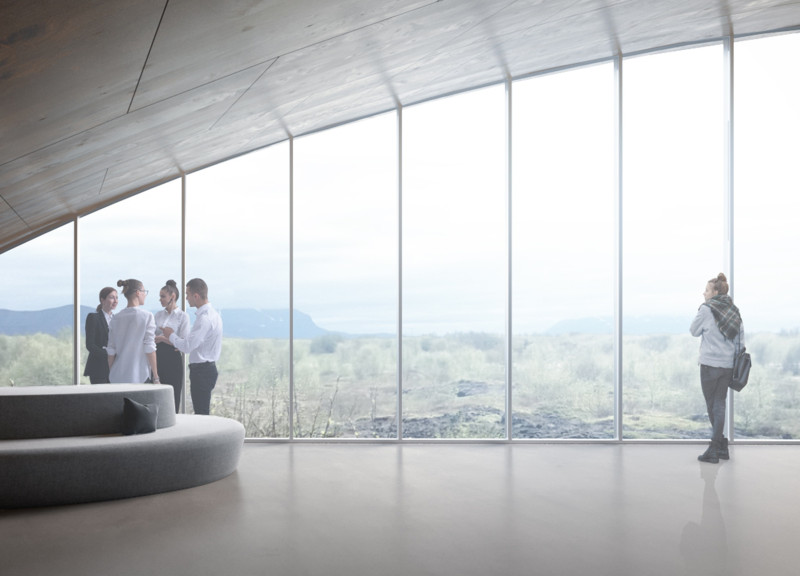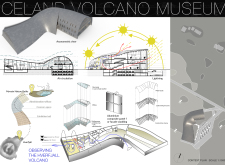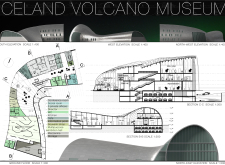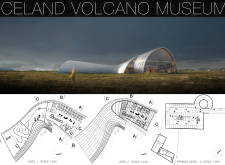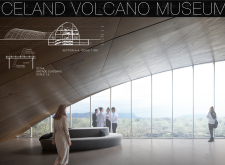5 key facts about this project
The structure showcases a blend of modern architecture and functional design, serving as both an exhibition center and a community space. The primary function is to educate visitors about Iceland's unique geological features through interactive displays and informative exhibitions. The museum's layout encourages exploration and engagement, facilitating a comprehensive understanding of volcanic phenomena.
This project employs a distinctive architectural form characterized by a wave-like silhouette, which serves to evoke the flowing nature of lava and geological formations. The design is composed of several key elements that contribute to its unique identity. Extensive use of aluminium composite panels for the façade ensures durability while providing visual coherence with the rugged landscape. The metal cladding contributes to the robustness of the materials used, catering to the harsh climatic conditions of the region.
Another significant aspect of the museum's design is the integration of natural light through ample glazing. This feature not only enhances the visitor experience but also connects the interior spaces with the outdoor landscape, emphasizing a sense of place. The wooden facades add warmth to the interior, creating inviting atmospheres conducive to learning and engagement.
Furthermore, the spatial organization prioritizes visitor flow and accessibility. The exhibition areas are designed to accommodate a variety of educational programs and community events, highlighting the museum's role as a multifunctional space. The ground floor features a large exhibition hall, while the upper levels include multi-purpose rooms and visitor accommodations, facilitating extended stays during adverse weather conditions.
Unique design approaches in this project include an emphasis on sustainability and natural integration. The architects focused on using local materials, reflecting the geographical context of the museum and promoting environmental responsibility. The incorporation of natural ventilation strategies reduces reliance on mechanical systems, aligning with sustainable architectural principles.
The Iceland Volcano Museum stands as a noteworthy architectural endeavor that merges educational objectives with a commitment to sustainable design. To explore the intricacies of this project further, including architectural plans, sections, and detailed design ideas, readers are encouraged to review the project presentation for a more comprehensive understanding of its elements and architecture.


